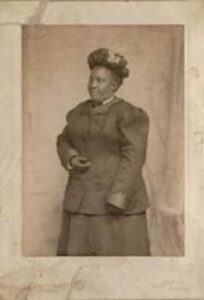
This date marks the birth of Sarah Mapps Douglass in 1806. She was a Black educator and abolitionist.
Born in Philadelphia, Douglass was the daughter of Robert Douglass and Grace Bustill Douglass. Her grandfather was Cyrus Bustill, a Quaker who owned a bakery, operated a school, and was one of the early members of the Free African Society, the first Afro American charity organization. Her mother operated a millinery store next to the family bakery. Young Douglass entered the "colored" school that her mother and the wealthy Negro shipbuilder James Forten established in 1819.
Around 1827, Philippa established a school for Black children. Although the school was to be self-supporting, by 1838, the funding level was insufficient, and the Philadelphia Female Anti-Slavery Society took over. Douglass was a member and attended several conventions. By 1840, she had served the group as a board of directors member, the committee on annual fairs, the education committee, a librarian, and a corresponding secretary.
Patterns of racial segregation in Philadelphia were deep-seated and even practiced by the Quakers. Quaker meeting houses had "Negro seats," or Negro pews, placed under the stairs or in a corner and guarded to keep the interracial membership from mixing.
During the 1830s, some Quakers challenged the city's segregation practices, and Douglass' efforts in this cause were significant. When William Bassett of Lynn, Massachusetts, undertook a plan to bring his fellow New England Quakers into the antislavery movement, Douglass provided him with important information on the Arch Street Meeting's segregated seating practices. She also supplied abolitionist Sarah Grimke, a white woman, with information that Grimke used in writing her 1837 statement, "The subject of prejudice against color amongst the Society of Friends in the United States," written in response to her censure by the Quakers for insisting on sitting beside Douglass and her mother at services. When Angelina Grimke and Theodore Weld, a prominent abolitionist, were married in May 1838, Douglass and her mother were among the Negro guests at the wedding. The Philadelphia press called the incident an intolerable act of abolitionists' "amalgamated" practices.
Two days later, a mob burned down Pennsylvania Hall, the state antislavery society's newly built headquarters, and set fire to the Shelter for Colored Orphans. Meanwhile, Douglass continued her teaching career. In 1853, she was appointed head of the girls' primary department of the Institute of Colored Youth. The institute was the forerunner of Cheyney State College. Douglass remained there until her retirement in 1877. In 1855, she married William Douglass, rector of St. Thomas Protestant Episcopal Church, a widower with several children. After her husband died in 1861, Douglass devoted her time to antislavery activities and continued teaching.
When the American Civil War ended, Douglass became vice-chairman of the Woman's Pennsylvania Branch of the American Freedmen's Aid Commission. She died in Philadelphia on September 8, 1882.
Voices from the Gaps
Department of English, 207 Lind Hall
The University of Minnesota,
Minneapolis, MN 55455